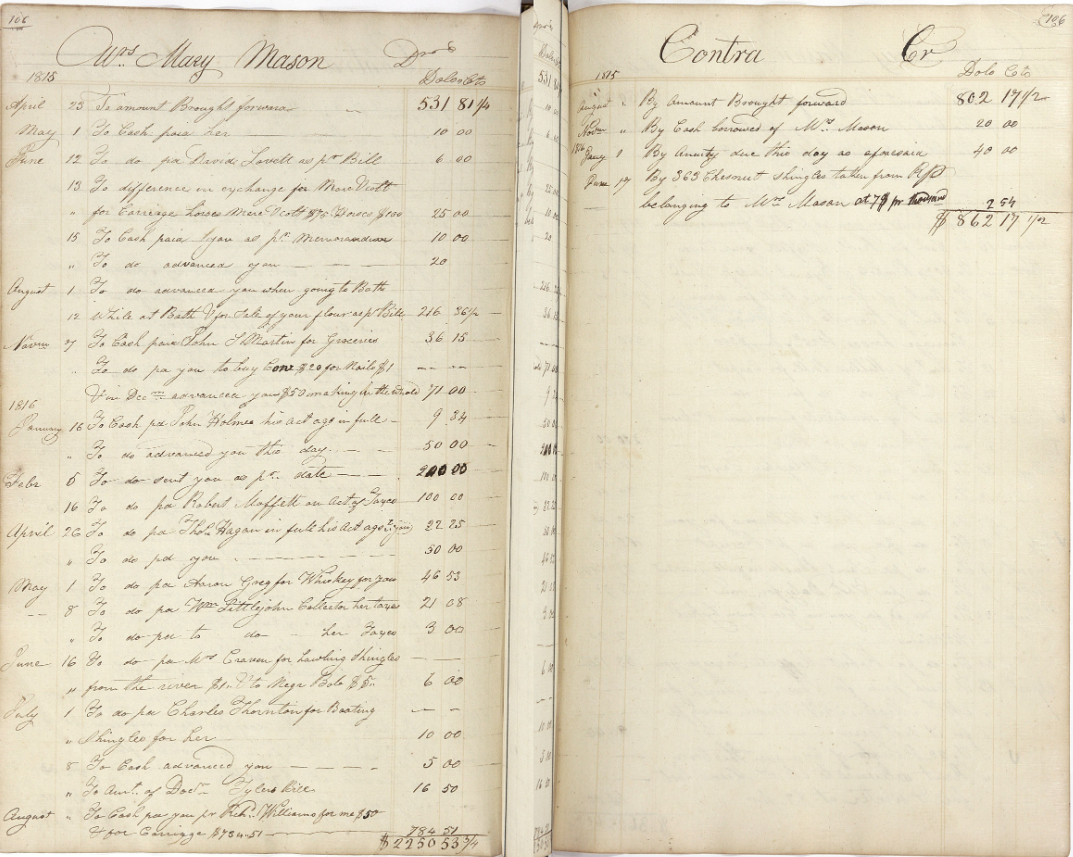Tyler, Dr.
Birth
Death
Name variations
Last Name
Person Title
Person Biography
Tyler was a common surname in Loudoun County in the early nineteenth century. It is not clear if any of the Tylers living in Loudoun at the time were doctors. There were at least three Dr. Tylers living in Frederick County, Maryland, which is located across the Potomac River adjacent to Loudoun County. White’s Ferry, an eighteenth-century river crossing in operation until 2020, is not far from Raspberry Plain and would have provided a convenient way for any of the three Dr. Tylers to cross the Potomac and visit patients in Virginia.
Born in Prince George’s County, Maryland, in 1784, Dr. William Tyler Sr. had a prosperous medical practice. During a yellow fever epidemic in Frederick County in 1821, Tyler tended to some 500 patients at one time. He also performed surgeries; in 1831, he amputated part of farmer John Houck’s leg “below the knee” a year after Houck injured himself falling off a horse. Tyler was involved with politics and in 1826 lost the Maryland gubernatorial election against Dr. Joseph Kent. Later the same year, Tyler became one of the directors of the Frederick County Water Company. Despite never accomplishing his political goals, Tyler enjoyed discussing politics with his friend, diarist Jacob Engelbrecht, and asked Engelbrecht to record his (correct) prediction that President John Quincy Adams would lose the 1828 presidential election to Andrew Jackson a year before the election took place.
At least two other members of Dr. William Tyler Sr.’s immediate family were also physicians who shared his surname. William Sr. and his wife Mary had nine children, including Dr. William Tyler Jr., born in 1808. William Jr., who was similarly well known in Frederick County, married a woman named Jane. William Sr. also had a brother, Dr. John Tyler, born in June 1763. John studied with Dr. Percival Potts in London and is said to have performed one of first cataract surgeries in the United States. By 1800, he had successfully treated more than forty patients in neighboring states for cataracts.
Both Dr. William Tyler Sr. and his brother Dr. John Tyler owned enslaved people. In 1820, the U.S. census reported that five enslaved people belonged to John. In 1828, an enslaved man dug up a box containing approximately $2,000 while working on William Sr.’s property. Englebrecht wrote that the man “kept it rather to himself and denies all knowledge of it.”
The “Dr. Tyler” mentioned in the Mason family manuscript account book was likely either Dr. William Tyler Sr. or his brother Dr. John Tyler; however, there was one more Dr. Tyler living in Frederick County at the time, who was apparently not related to the other doctors who shared his name. Dr. William Bradley Tyler was born in 1788 and died in 1863 in Frederick County. Another prominent figure in the Frederick County community, William Bradley Tyler served on the board of directors for the Frederick County Bank. After the Frederick County Bank was robbed in 1841, William Bradley Tyler and the bank cashier, William M. Bealle, went to New York to negotiate with a man named Mr. Wiley “who represented himself to be a lawyer…acquainted with such facts as would enable him to return the stolen money.” In total, $185,976 consisting of various notes and securities and approximately $10,000 worth of gold was stolen in the robbery. Following the negotiations in New York, the robbers were allowed to keep approximately $28,000, including all the gold.
By Duncan Crossan

